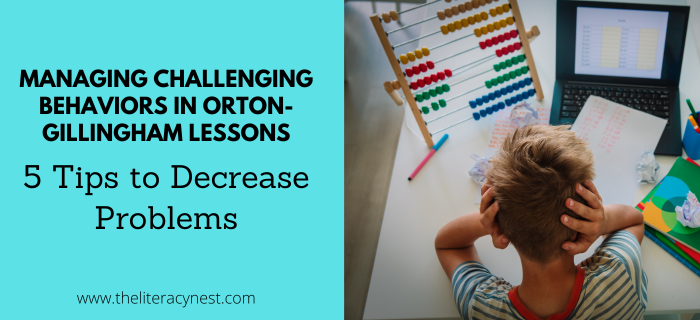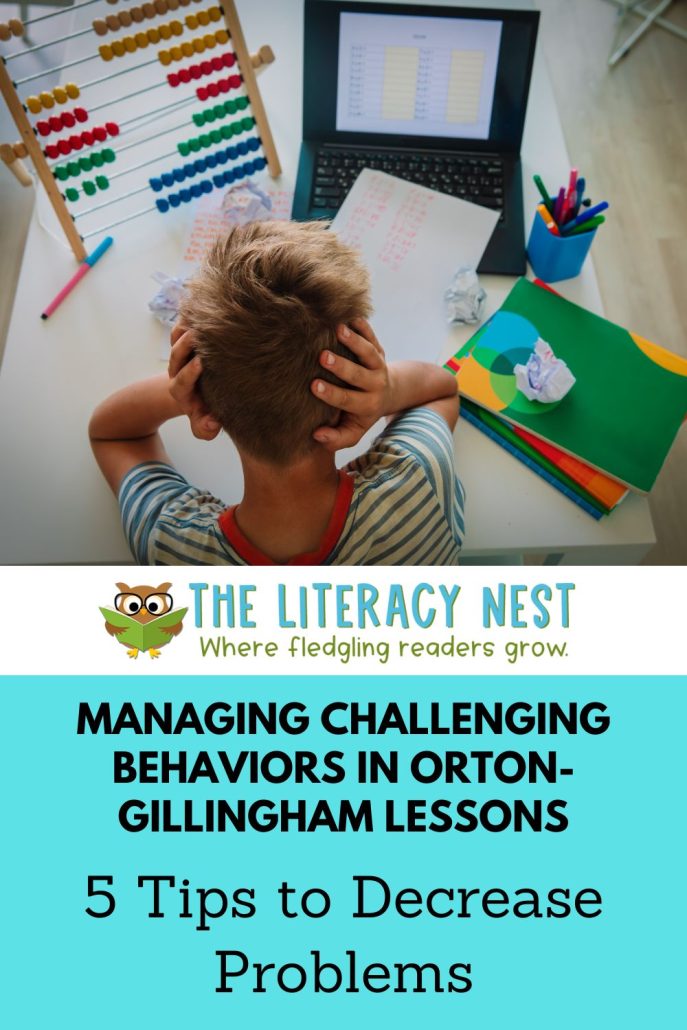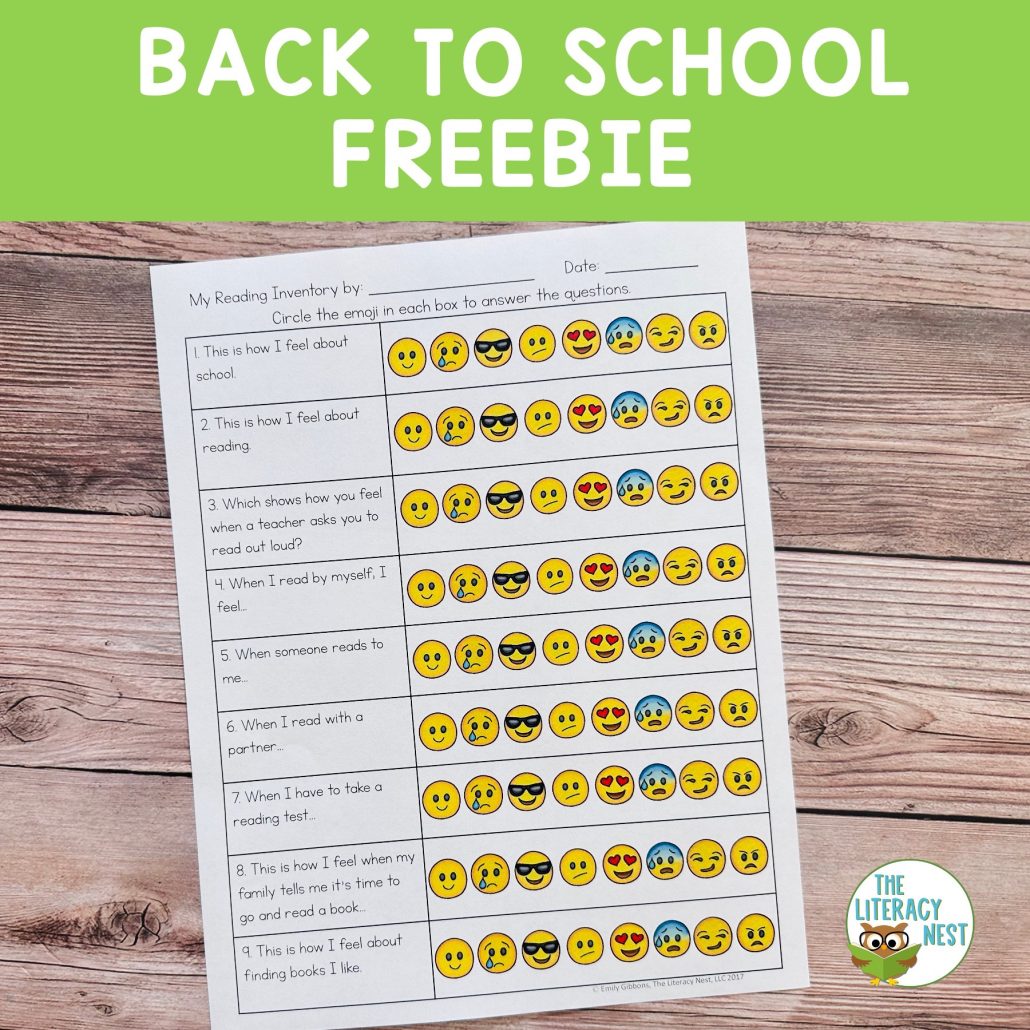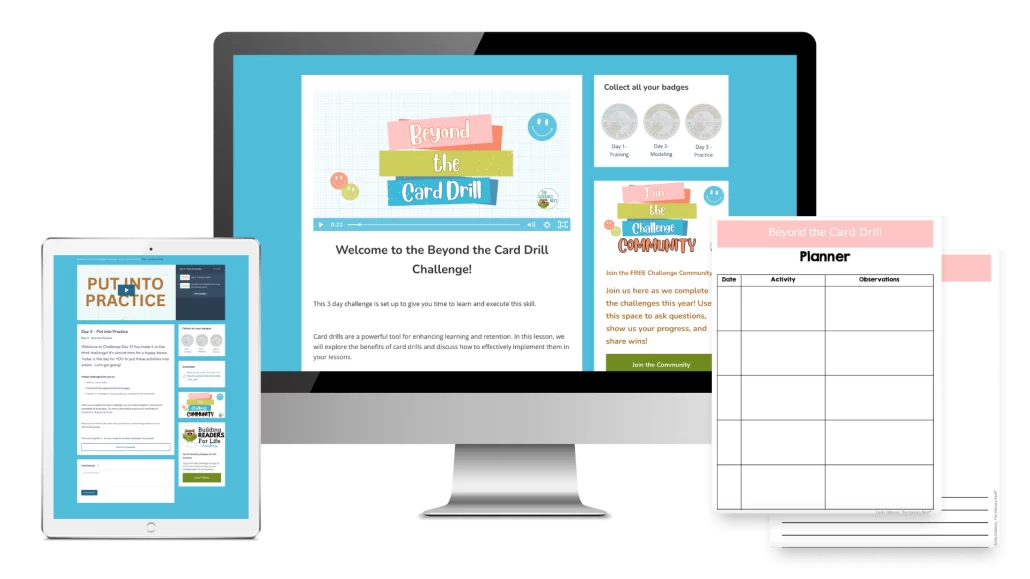Managing Challenging Behaviors in Orton-Gillingham Lessons: 5 Tips to Decrease Problems
Whether you are working in a mainstream classroom, in small groups, or in a one-on-one tutoring situation, you are bound to encounter the occasional challenging behaviors in Orton-Gillingham lessons. When choosing which techniques to best help a particular situation, I find it helpful to start with the ABCs of behavior. Getting to the root of the problem leads to a happier solution for teachers and students alike.

The ABCs of Behavior
A: Antecedent. This is a fancy way of saying, “What happened immediately before the misbehavior?” Did a student struggle with a task? Were they feeling embarrassed in front of a peer? Were you about to transition to a new activity? Was something too easy? Looking at what triggered a particular behavior is key to helping us figure out the reasons behind the behavior.
B: Behavior. What is the behavior? Try to be specific in your description.
C: Consequence. This is not a matter of time outs or missed recess, but rather what occurs naturally or through our current reactions as a result of the behavior. This may be leading the behavior to continue or help the behavior to decrease.
For example, a student who is a stronger reader than a writer may begin to not follow directions, play with his pencil, fool around with peers, and derail an entire lesson the moment we take out pencil and paper. If I think about the ABCs, I may gain a little insight into what is going on. The antecedent is beginning the writing and dictation portion of the lesson. The behavior is being off-task and disruptive. The consequence is that I cut that portion of the lesson short due to time. In effect, my response, while logical, reinforces the behavior I don’t want by decreasing the pain from the undesirable activity.
As teachers, we can control the antecedents and the consequences, but only the student can make choices about his or her behavior. For students with dyslexia, school, and learning have frequently been an unpleasant experience and they may have well-established patterns of misbehavior. It is also quite common for children with reading difficulties to struggle with focus and attention. When you analyze it, most of their misbehavior is motivated by a desire to either avoid something difficult, or not to feel embarrassed in front of their peers.
Learn more about how we can talk about dyslexia. Listen to season 3, episode 2 of The Together in Literacy Podcast: How to Talk About Dyslexia.
Here are 5 Tips to Avoid Losing Valuable Teaching Time to Challenging Behaviors in Orton-Gillingham Lessons
And, as a bonus, these tips are also really effective for students with attention difficulties.
Don’t miss our downloadable checklist for decreasing challenging behaviors in your Orton-Gillingham lessons.
1. Avoid downtime.
Have your materials at the ready and keep all students actively engaged and responding. Instead of taking turns, give each student a specific task to do. Find ways that students can respond simultaneously and even privately. For example: writing answers on a whiteboard shown only to the teacher, pointing, giving a hand signal, or moving letter tiles.
2. Create a safe climate.
This is especially important for older struggling readers working in small groups, but even for individual tutoring, it can be difficult for a student to trust that they will not be laughed at or made to feel inferior. Laying down guidelines about kindness, encouragement, and giving each other wait time can go a long way toward making students feel safe taking risks. It is also vitally important that making mistakes is viewed as a positive step toward mastery. I try hard to take responsibility for errors that result from poor word choices or lack of clarity and make it clear that the student is not responsible for my mistakes. Rather than telling a student an answer, guide them to the correct answer themselves. Avoid having another student be in a position to correct a peer.
3. Include games and fun activities.
Making learning engaging and fun goes a long way toward preventing behavior problems. It also provides leverage to get through something tricky. Point out that working hard and staying focused will give you more time for a fun activity. Maybe even consider doing a lesson component out of order to get it out of the way when the student is feeling less tired and more cooperative. Make sure the tasks you are asking the student to do are just right; not too easy and not too difficult. For more information on playing games, read this post. For game ideas, try these.
Dyslexia fatigue is real! Learn more about it. Read Understanding Fatigue from Dyslexia!
4. Frontload both expectations and emotions.
Setting very clear expectations and reviewing those expectations regularly, helps students keep the desired behavior at the forefront of their mind. It is a scientific fact that emotions will always take precedence in our brains over memory, learning, and cognition. The same neurotransmitters that kept cavemen safe from predators, cause a child who is feeling unsure and vulnerable to freeze and become unable to access their knowledge and strategies. Even very young children can understand this and learn to take calming breaths and let their brains do their job. As teachers, being tuned into our students’ emotional state, taking a few minutes to check in, and giving the child who may need a little boost some extra attention, sets the stage for a successful lesson.
Learn more about visual schedules and how they can help frontload expectations. Watch Using A Visual Schedule!
5. Use a reward system.
Although prevention is more effective than most behavior charts, some students benefit from a visual/tactical reminder. An example would be for each student to have 5 tokens to start the lesson. These could be pennies, laminated pictures stuck with Velcro, blocks, or even candy. Every time you need to correct or redirect a student, you take away one token. At the end of the lesson, the tokens left can accumulate toward a prize or sticker. This is a particularly good way of providing more support for one or two children without singling them out.
Additional Ideas
Another easy reward system is time-based. Set a timer for random intervals. When the timer goes off, if the student or students are doing what they are supposed to, they get a tally. This works both individually or as a group adding marbles to a jar or tallies to a chart for a special treat like a game day or party. Alternatively, points or tokens can be given at various predetermined points throughout the lesson, based on the children’s participation during the previous components.
Timers are also a great tool for teaching focus. Set a timer and give the students a challenge. “See if we can get through this big stack of phonogram cards before the timer goes off”. Another spur-of-the-moment technique is a game of hangman. The teacher will add a body part for every redirection needed. You don’t need to do any talking, but it is surprisingly effective. This is particularly helpful for those students who have a knack for drawing you into their distraction. Best of all, I have seen students begin monitoring and catching themselves before interrupting their work.
For children who struggle in school, their challenging behaviors in Orton-Gillingham lessons may very well have served as survival skills. These things kept them safe in the regular classroom environment. Carefully planned, individualized OG lessons and a warm rapport with your students can go a long way toward preventing behavior challenges. Staying on the cutting edge of a student’s learning, offering the right level of scaffolding, and building a relationship of mutual trust and respect is ultimately going to be more powerful than any behavior chart or reward system.
Have you found a system for addressing challenging behaviors in Orton-Gillingham lessons with your students? I’d love to hear about it. Please let me know in the comments.
Back-to-School Freebie
This surprise BTS freebie can be used across a wide range of grade levels. It’s a perfect tool for the first week of school!
You can grab it at The Literacy Nest Shop.
Beyond the Card Drill!
This 3-day challenge will help to FULLY equip you with the background, the modeling, and the tools you need to branch out. Learn HOW you can change up your card drill and ELEVATE your students’ learning as you help them achieve mastery.
What does the 3-day challenge look like? This is a fully asynchronous and virtual training. You can complete the 3-day challenge at your convenience. Day 1 is where your training kicks off. On day 2, you’ll watch the card drills in action. And, on day 3 you’ll put what you’ve learned into practice by trying the drill yourself.
Join the 3-day challenge, here! Or, become a yearly member of the Building Readers for Life Academy to join in on all of our challenges!






